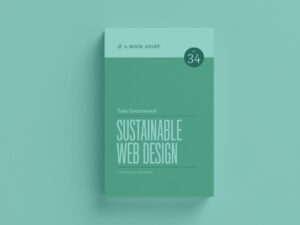
Conversion Rate Optimisation is a service that we’re really passionate about, and we love discussing it with other experts in the field. Leadoo was founded with a mission to make websites convert more effectively. Originating from Finland and founded in 2018, Leadoo is one of the fastest growing martech companies in the Nordics with almost 1,000 clients using their platform and 90 employees throughout Europe.
Using traditional marketing strategies and digital marketing such as SEO and PPC allows most companies to attract visitors, but often these businesses struggle to convert visitors into customers.
Leadoo is the #1 Conversion Platform in the world and helps companies from all continents to convert visitors more effectively.
We sat down with Santtu Kottila, CMO & Co-Founder at Leadoo, to talk about conversion, its links to SEO and the customer journey, and the things Santtu wishes more people knew about optimisation.
Can you tell us what soft conversions are and how these turn into soft vs. hard leads?
Most companies are only interested in hard conversions. This means they’re missing out on a lot of opportunities! This is where soft conversions, and understanding the buyer’s journey, comes into play.
A typical website visitor usually has several touchpoints with the business and might not purchase on the first visit to the site. Buyers’ purchasing decisions are varied and subject to change at short notice. The end point – the actual purchase or filling a contact form – is what’s known as a hard conversion or lead.
Soft conversions are data points – and contact information collected – that somehow reveal the customer’s interests, motives and pain points. Soft conversions help you to make more, and better quality, hard conversions because you can be more precise with your messaging.
What are your three main tips for anyone who wants to improve their conversion rate?
- Firstly, make sure that you have conversion points on every single page you have. Too often you see pages that don’t include even a clumsy contact form!
- Secondly, does the website offer any engagement that tries to activate visitors? People buy from people and we humans want to be acknowledged and get customised help in our buyer’s journey. Adding elements that offer a human approach and connection is a must in order to activate visitors towards a hard conversion.
- Thirdly, I would focus on validating your traffic quality. Sometimes companies struggle to convert visitors but the problem isn’t the website itself but rather the low traffic quality and a high level of spam or people who are not the right target market. Make sure you have the right tools to estimate your traffic quality.
Does SEO have an affect on conversion rate?
Search Engine Optimisation doesn’t affect the conversion event that happens on the website as such, but of course if you are able to drive quality traffic through SEO to your website it means you will have better chances of converting more visitors.
SEO brings the traffic, conversion optimisation makes it more likely that the traffic will convert.
Leadoo offers several types of bots, why do you think this is important for the customer journey on a website?
Bots can mimic human behaviour and therefore provide 24/7 help in the buyer’s journey. Price calculators, sales assistants, tests, FAQ bots are great ways of making sure visitors are being activated on the website and that the likelihood of them converting is as high as possible. Visitors expect personalised help and you either need an army of live agents to serve them or you can utilise bots.
What are hybrid chats? And why do they benefit the customer journey?
Hybrid chatbot is a chat where livechat and a chatbot are offered side by side. These are built in a way that usually chatbot answers the most common questions that equal to 93-97% of all inquiries, but there is always the option of switching the conversation from a bot to a human chat.
There are several benefits in hybrid chats. They make sure help is there for the visitor – and most importantly the help is quickly available. Chatbots will take care of the vast majority of questions quickly, and this also means that the human helpers on the livechat are better available to help visitors as they are not flooded with repetitive questions as the chatbot handles them.
What is the most common mistake companies make with their customer journey?
It must be the assumption that the customer journey is linear and short, whereas the truth is that it’s far from linear and takes significantly more time than expected. When you realise this and stop pushing for a quick and hard conversion then a whole new world of opportunities open up both for you and your visitors!
What is one thing you wish more people knew about conversion optimisation?
Conversion optimisation is not only about button colours, the location of the button and the call to action tests, and how to a/b test these. I hope people would understand that fundamentally it’s about how to cater to the customer journey in a personalised manner in order to convince your visitors to click on that call to action.
You can find out more about Leadoo’s thoughts around soft conversions here and more information about Footprint Digital’s thoughts on CRO can be found here.
A note from Footprint’s Head of Content & Conversion, Josef James:
Santtu and Leadoo are completely right, soft conversions are rarely (if ever) tracked and they give a lot of valuable insight. Similarly, I can count on one hand the number of businesses that are collecting good qualitative feedback from their visitors regularly.
There’s such a lack of surveys, user testing and general UX analytics being used on websites – and even when these things are taking place, the questions are low-quality or the analysis and actual insight are missing.
If I was to add to Santtu’s answer to “What are your three main tips for anyone that wants to improve their conversion?”, I’d say ask your visitors their opinions more often, then squeeze real insights from the responses and actually act on them.







